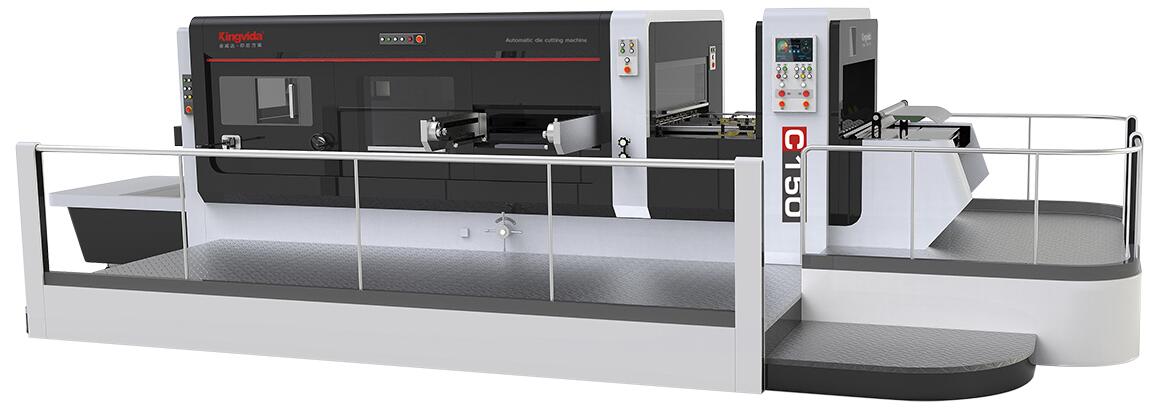Die cutting is a fabrication process which employs specialized machines and machine tools to convert stock material by cutting, forming, and shearing it into custom shapes and designs. Both versatile and customizable, the die cutting process is suitable for a wide range of materials, including metal, plastic, wood, and composites. It also has manufacturing applications in a variety of industries, including die cutting neoprene, gasketing, die cutting paper, packaging, die cutting fabric, and producing die cut foam.
There are several different types of die cutting processes available today, including flatbed die cutting, rotary die cutting, and digital die cutting, with each process variant offering its advantages and disadvantages. The requirements and specifications demanded by a particular die cutting application—e.g., materials being converted, part size, desired tolerances, initial and long-term costs, lead times, etc.—help determine the type of die cutting process most suitable to use in a given situation.
This article focuses on the die cutting process as a whole, outlining the different types of die cutting and their required machines and components. Additionally, the article explores various die cutting capabilities and material considerations and provides alternatives to the die cutting process.

Overview of Die Cutting and Capabilities
Die cutting is a versatile fabrication process which typically utilizes custom-designed dies affixed to specialized machinery to convert stock material. It is suitable for a wide range of materials, and a variety of applications and industries. Additionally, the die cutting process offers several different cutting operation capabilities, including:
● Through cutting
● Kiss cutting
● Perforating
● Scoring
● Creasing
Through Cutting: Also referred to as metal-to-metal die cutting or thru cutting, through cutting cuts the custom design through the entire material. For example, when die cutting plastic with adhesive backing, the die cuts through the plastic face, adhesive, and backing material layers. The die cut design is fully separated from the stock material.
Kiss Cutting: For adhesive lined materials, kiss cutting cuts the custom design through the face and adhesive layers, but not the backing material layer. The die cut design is not fully separated from the stock material, but can be easily removed from the intact backing layer.
Perforating: Perforating produces a series of punched-in holes which holds the die cut design in place on the stock material. The design is not fully separated from the stock material, but can be easily detached along the perforated lines.
Scoring: Rather than cutting entirely through the stock material, scoring leaves a die impression, indent, or partial cut at a single stress point. The score produced typically only penetrates or cuts through ≤50% of the material which reduces the thickness at the stress point, allowing for square profile folds.
Creasing: Similar to the scoring process, creasing creates a fold line on the stock material. However, unlike scoring, creasing reshapes the material to have an inward bending bulge between two parallel stress points. Having two stress points increases the flexibility of the material at the crease and reduces the amount of stress on the material at each point when it is folded.
Other die cutting capabilities available include bending, broaching, coining, curling, and swaging.
Material Considerations
The die cutting process is suitable for a variety of materials, including metal, plastic, paper, fabric, foam, wood, and composites. The type of material being converted and its properties largely determine the optimal die cutting process to use for the application, as well as the optimal machine configuration and die design.
The flatbed die cutting process is capable of converting materials in both sheet and roll form. The properties of the material—mainly the material’s thickness and compressibility—influence the design and geometry of the die, as well as the suitability of using the flatbed die cutting process for a particular die cutting application. As flatbed presses are capable of exerting greater cutting pressures than other die cutting processes, the flatbed die cutting process is suitable for cutting through soft and thin materials, as well as hard and thick materials.
In contrast to the flatbed die cutting process, the rotary die cutting process is only capable of converting web materials. Similarly to the flatbed die cutting process, the material being cut via the rotary die cutting process influences both the rotary die design and the cutting pressure employed by the rotary press. Additionally, the material properties help determine whether a flexible die or a solid die is best suited for the particular cutting application.
The digital die cutting process is suitable for converting a variety of materials, ranging from textiles to paper to plastic. However, while the digital die cutting process is capable of processing low-shear materials comparable to more traditional die cutting methods—i.e., flatbed or rotary die cutting—in regards to processing high-shear materials, digital die cutting typically has much longer lead times.
Types of Die Cutting Tools and Services
There are several different types of die cutting services available, including flatbed die cutting, rotary die cutting, and digital die cutting. Each process variation provides advantages in regards to manufacturing applications, as well as limitations in regards to material capabilities, tolerances, production output, costs, etc.
1. Flatbed die cutting, also referred to as steel rule die cutting, is a fabrication process which employs a flatbed die cutting press and custom steel rule dies to convert the material into custom shapes and designs. This process is suitable for processing thicker material, producing larger parts, and completing small orders or short production runs.
2. Rotary die cutting is a fabrication which employs cylindrical dies affixed to a rotary press to convert flexible material—i.e., web. This process is suitable for applications requiring high precision and high accuracy designs, and high volume production runs.
3. Digital die cutting is a fabrication process which converts material without the use of dies. Instead, digital die cutting service providers employ computer-controlled lasers, blades, and tool bits to produce cuts, scores, and creases. This process is suitable for low-shear material converting applications requiring fast lead times and low costs while maintaining high precision.
Die Cutting Machines and Components
Depending on the type of die cutting process being performed, the die cutting process employs a variety of die cutting machines and cutting dies to produce the desired cuts, designs, and parts.
The flatbed die cutting process utilizes a flatbed die cutting press and steel rule dies. Flatbed die presses are available in mechanical, hydraulic, and electrical models with system configurations varying based on the particular cutting application. Steel rule dies are comprised of a custom-designed steel rule—the cutting components of the die—and a die base—the component which holds the steel rule in place and maintains its shape. There are several types of steel rule dies available, including blanking, combination, progressive, and progressive feed dies.
The rotary die cutting process utilizes a rotary die press and custom-designed cylindrical dies. Rotary pressed employ both flexible and solid cylindrical rotary dies, depending on the material being cut, the required specifications, investment cost limitations, and desired lead times.
The digital die cutting process utilizes computerized-controls to manipulate and operate knives, blades, and other machine tools. The design information for a part is digitally transmitted to the cutting mechanism which produces the desired cuts, perforations, scores, creases, etc.
Outlined above are the basics of the die cutting process, various types of die cutting and their required equipment. For more information about Die Cutting Machines, welcome to contact us.

 The outstanding Tangshan Kingvida Printing Machinery Co., Ltd. is a professional manufacturer of printing and packaging machinery...
The outstanding Tangshan Kingvida Printing Machinery Co., Ltd. is a professional manufacturer of printing and packaging machinery... The company has modern standard workshop and excellent staff. Since the establishment of our company in 2002...
The company has modern standard workshop and excellent staff. Since the establishment of our company in 2002... The outstanding Tangshan Kingvida Printing Machinery Co., Ltd. is a professional manufacturer of printing and packaging machinery....
The outstanding Tangshan Kingvida Printing Machinery Co., Ltd. is a professional manufacturer of printing and packaging machinery.... Our company has established a nationwide after-sales service network, in all parts of the country can provide customers with fast and high-quality pre-sale and after-sale services...
Our company has established a nationwide after-sales service network, in all parts of the country can provide customers with fast and high-quality pre-sale and after-sale services... The outstanding Tangshan Kingvida Printing Machinery Co., Ltd. is a professional manufacturer of printing and packaging machinery...
The outstanding Tangshan Kingvida Printing Machinery Co., Ltd. is a professional manufacturer of printing and packaging machinery...




